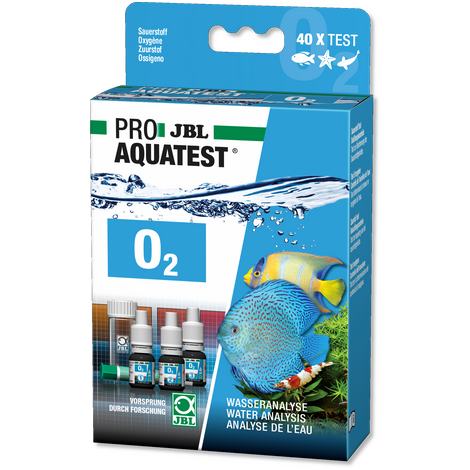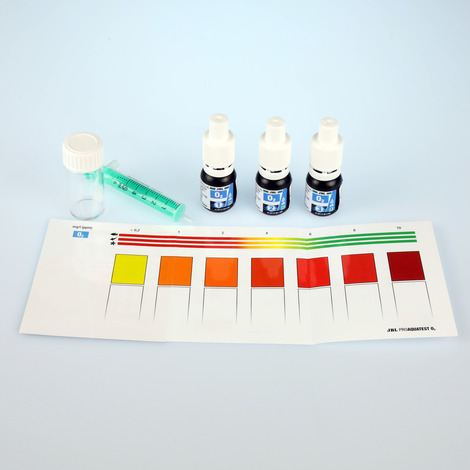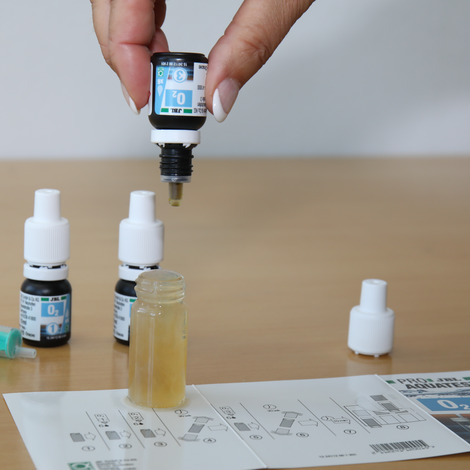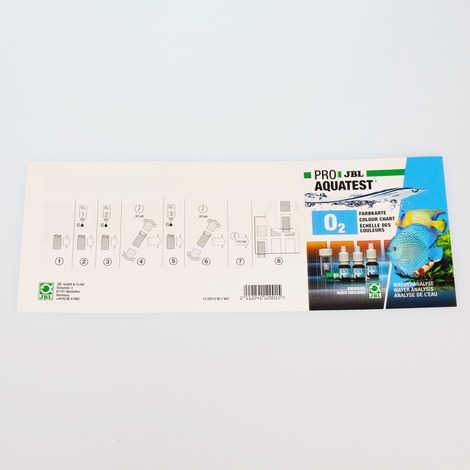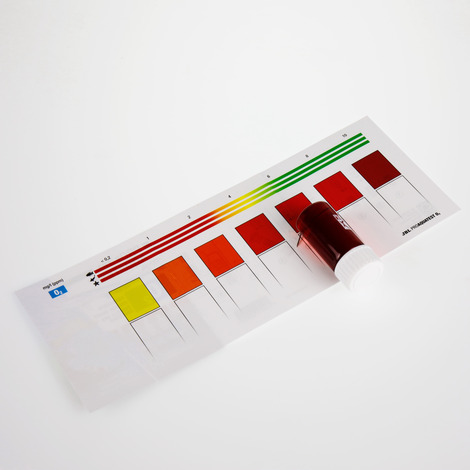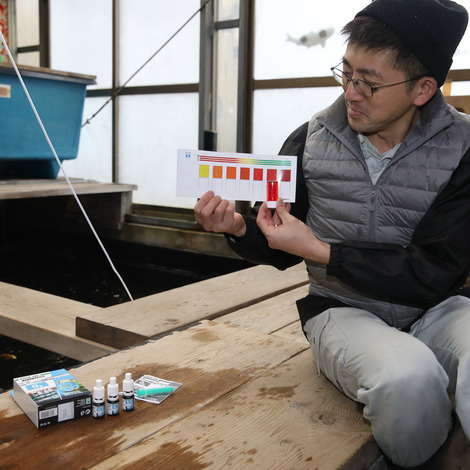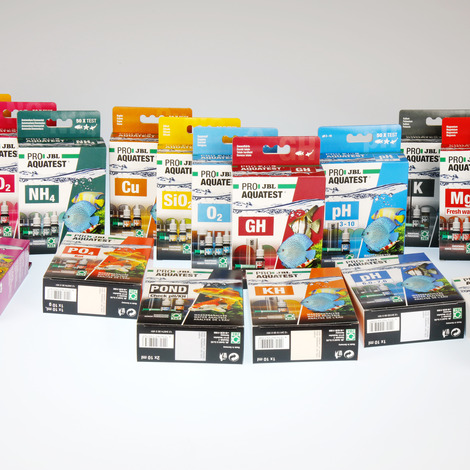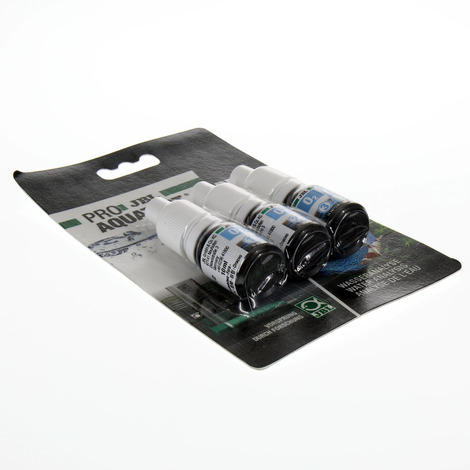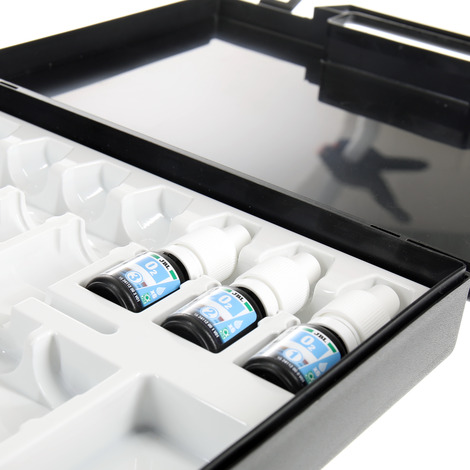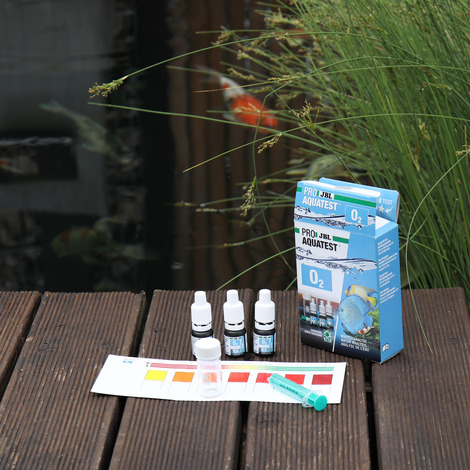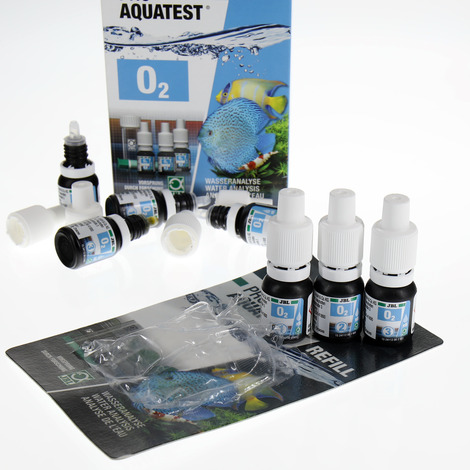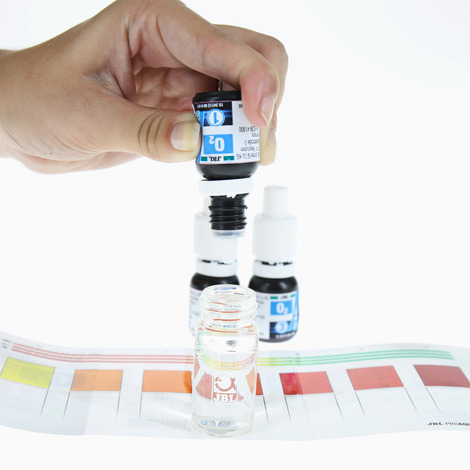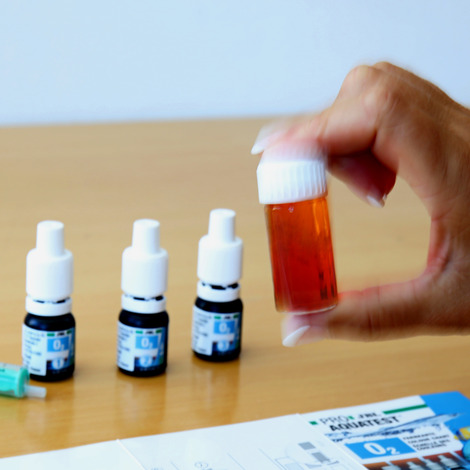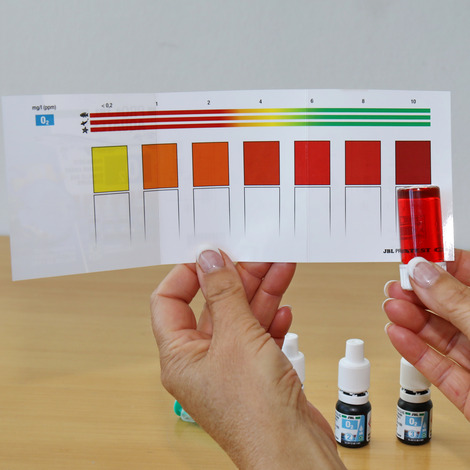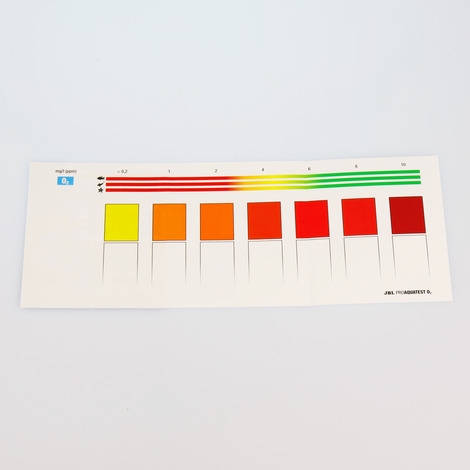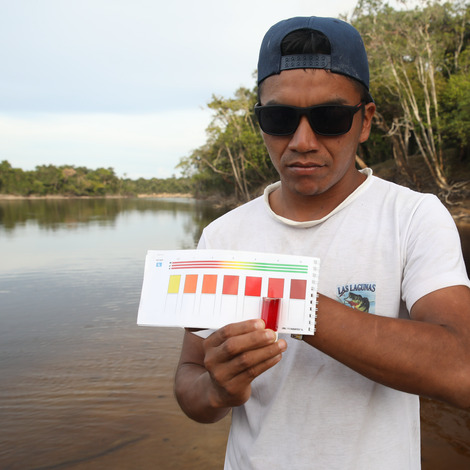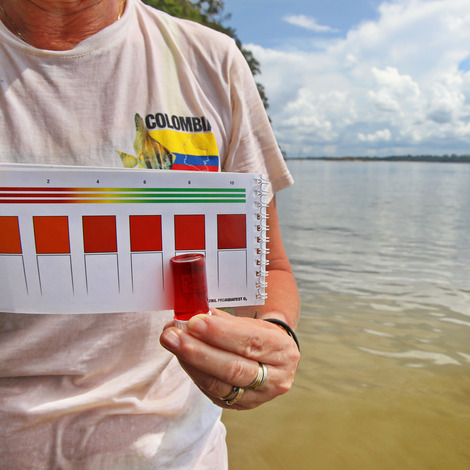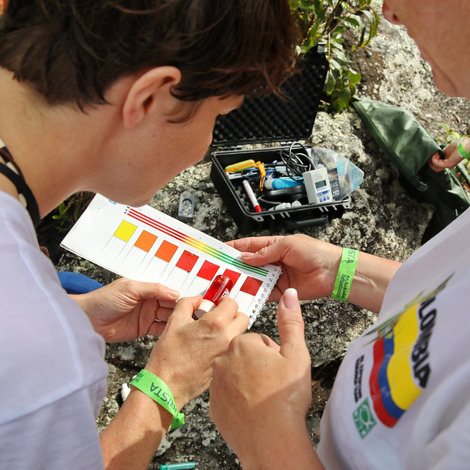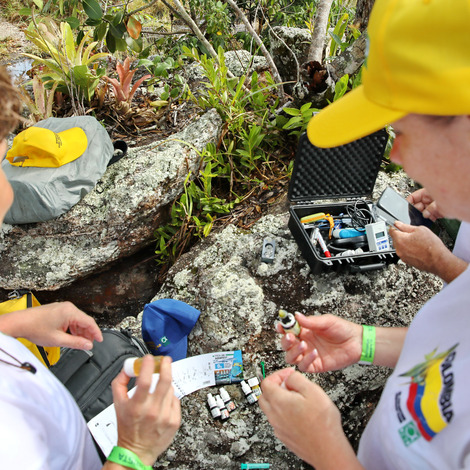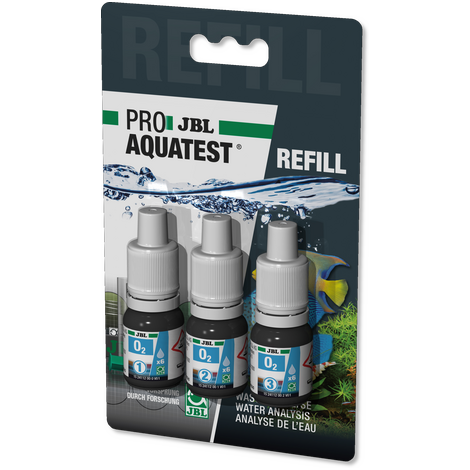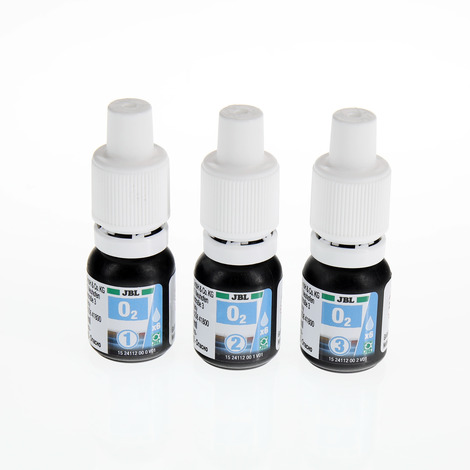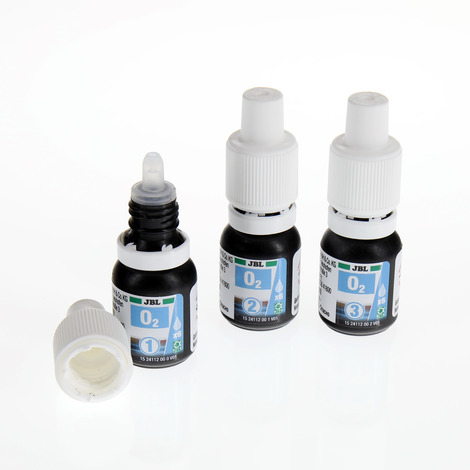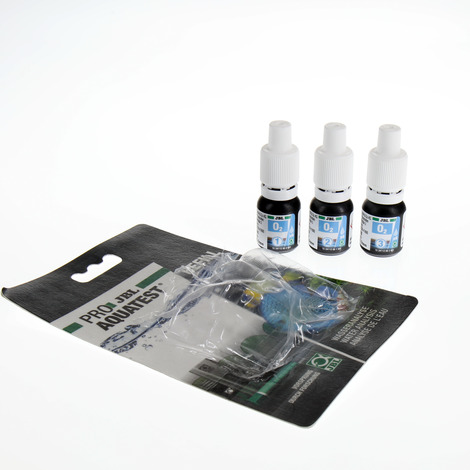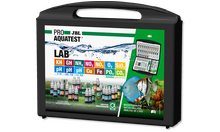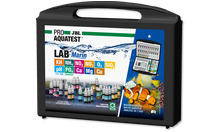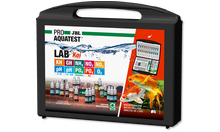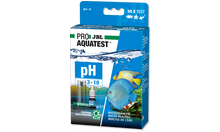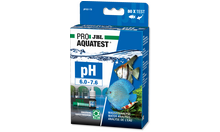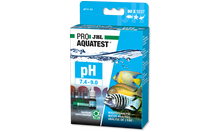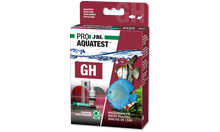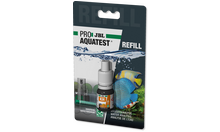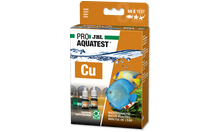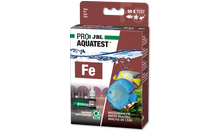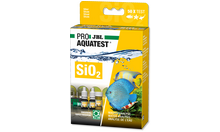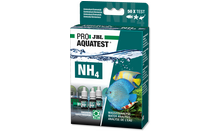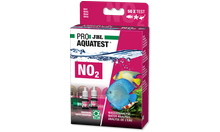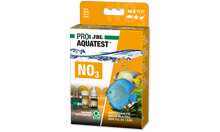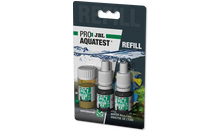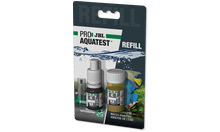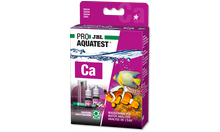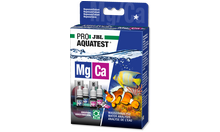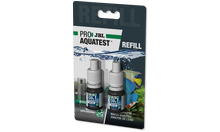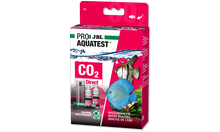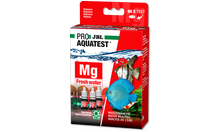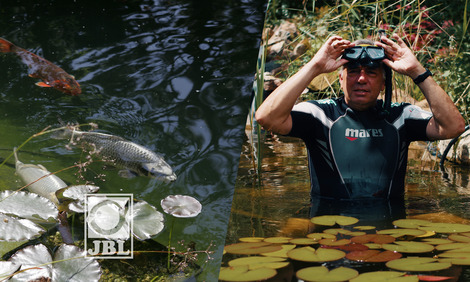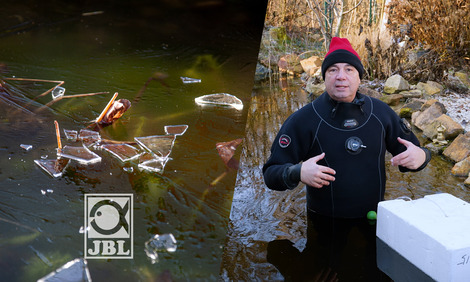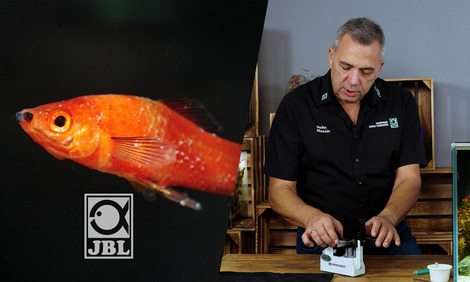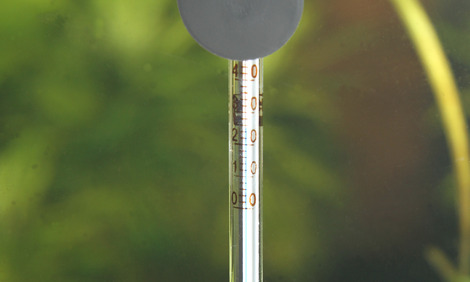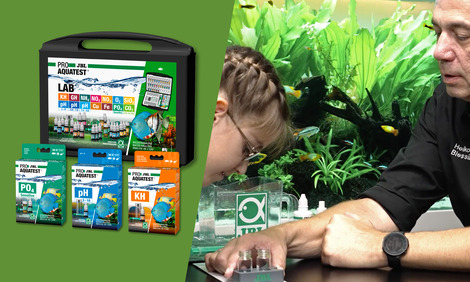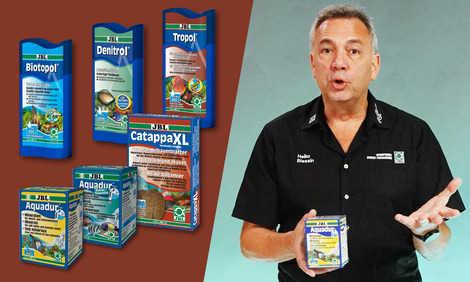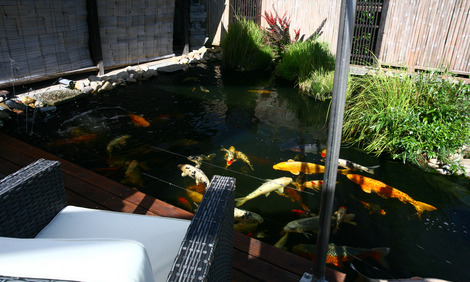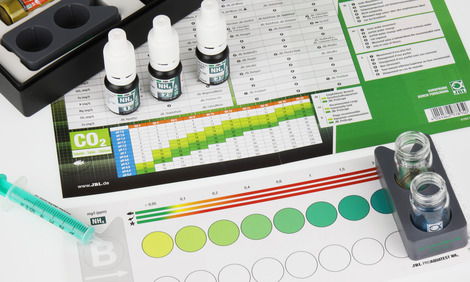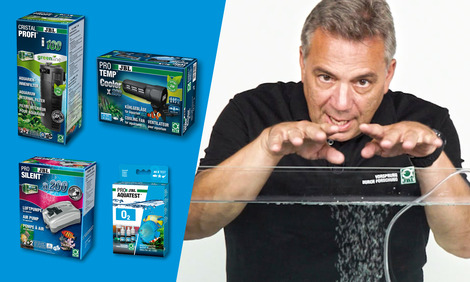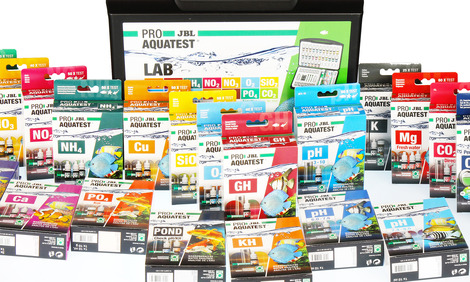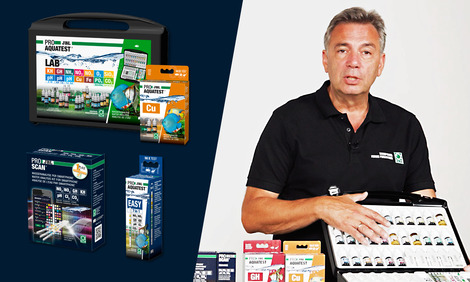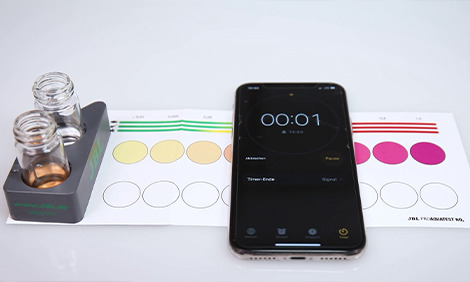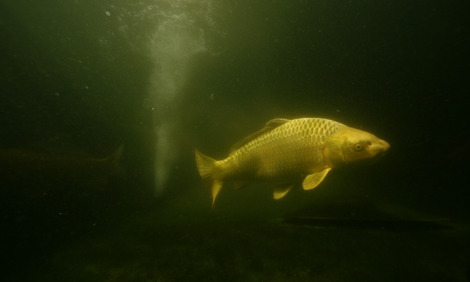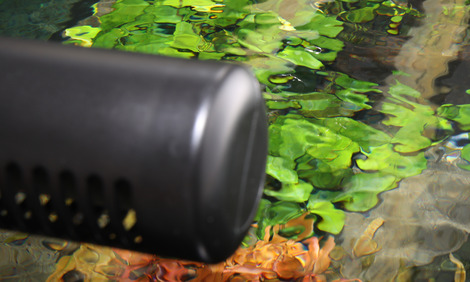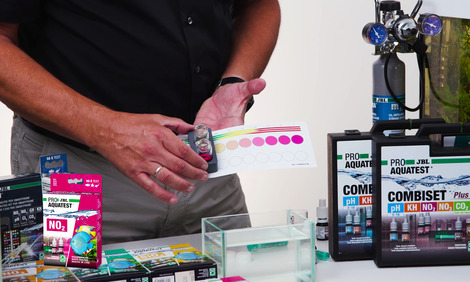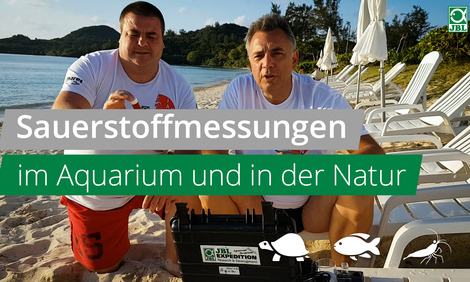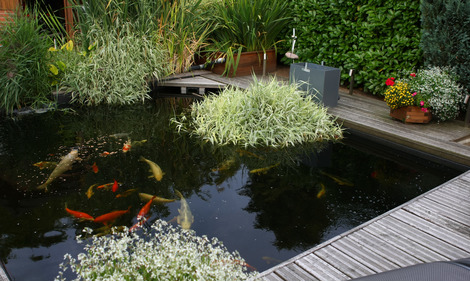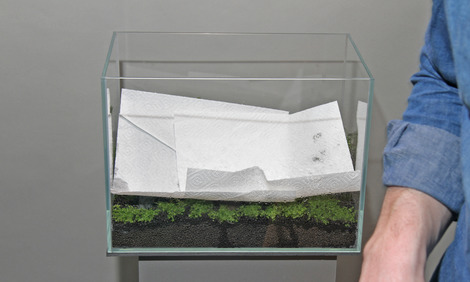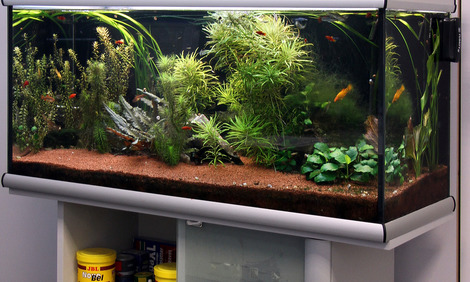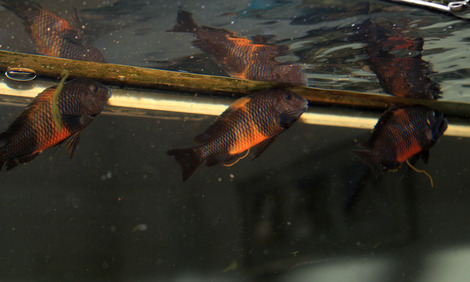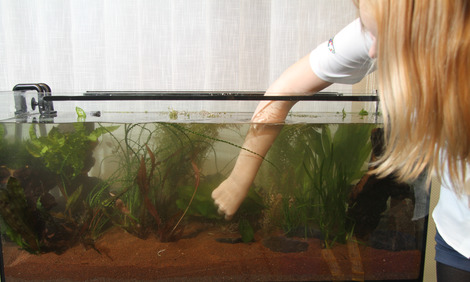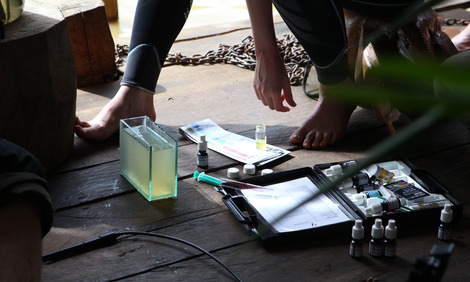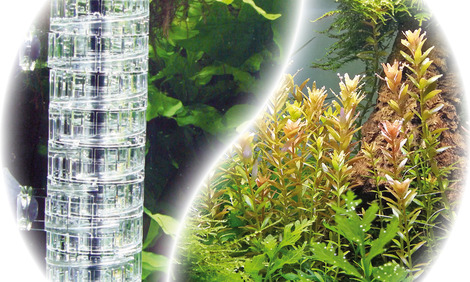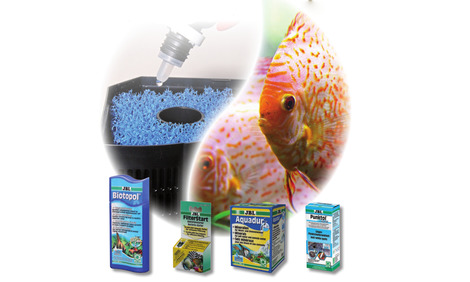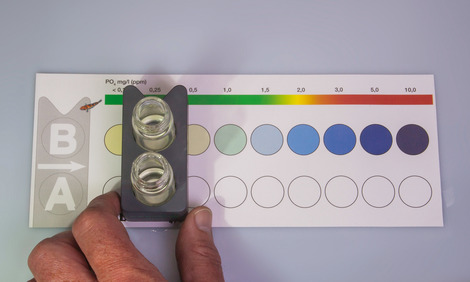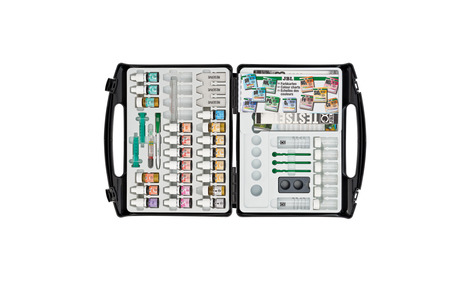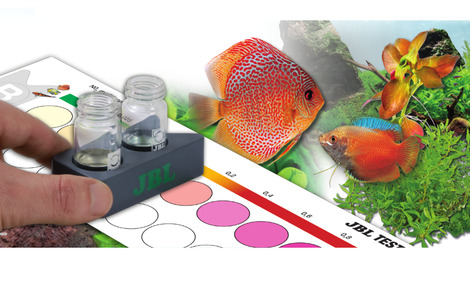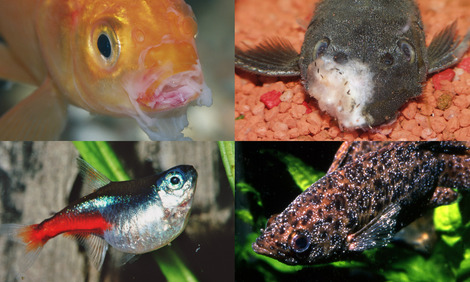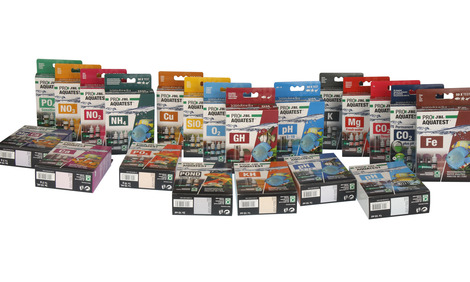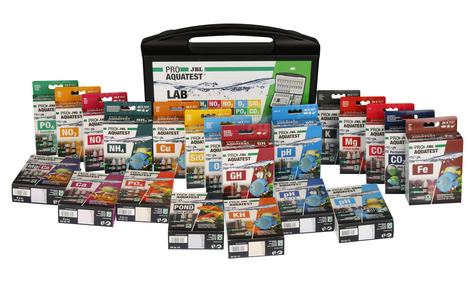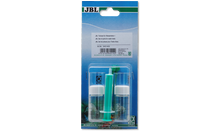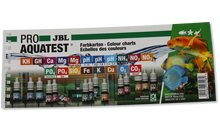Healthy aquarium/healthy pond with conditions close to nature
The right water values are dependent on the fish stock and the plants in the aquarium/pond. Even if the water looks clear it can be contaminated. With bad values diseases or algae can appear in the aquarium/pond. To maintain a healthy aquarium/pond with conditions close to nature it is important to check and adapt the water values regularly.
Why test?
The well-being of aquarium and pond dwellers and the healthy growth of aquatic plants depend to a large extent on the O2 level being kept as constant as possible. Oxygen is the “elixir of life” for all animal organisms. All animals in the aquarium and pond need oxygen to breathe. But the “invisible helpers” in the aquarium and pond, the bacteria that break down pollutants, also depend on sufficient supplies of oxygen in order to be able to carry out their useful activities. In aquariums and ponds with little or no planting and in marine aquariums the oxygen content always needs to be kept at an adequate balance using technical equipment. The water absorbs oxygen through the water surface. The more the surface moves, the more oxygen is absorbed. When the algae are dying and during an increased use of medications the oxygen content in the water needs to be increased by aeration.
JBL Online Laboratory on the JBL website in the main menu under “Service”:
Regular monitoring for a healthy aquarium/pond with conditions close to nature. Enter your water values into the JBL Online Laboratory and get an in-depth analysis of your values (free of charge) within seconds.
Recommended oxygen content:
Freshwater aquarium (community aquarium): 5-8 mg/l
Lake Malawi/Lake Tanganyika aquarium: 5-8 mg/l
Plant aquarium with few fish (aquascaping): 5-10 mg/l
Marine aquarium: 5-10 mg/l
Pond: 5-10 mg/l.
JBL PROAQUATEST O2 Oxygen
Quick test to determine the oxygen content in freshwater/marine aquariums and ponds
- To determine the current oxygen content and as a result indicate whether measures to increase the O2 content need to be taken
- Quick test to monitor the aeration: fill glass vial with sample water, add reagent, read sample value off colour chart
- When to use: once a week in newly set up aquariums and if there are signs of oxygen deficiency. Clear colour indication from yellow to wine-red
- You will find detailed information and troubleshooting tips about water analysis on the JBL website in Essentials/Aquarium or Pond
- Package contents: 1 quick test. Contents for approx. 40 measurements. Incl. 3 reagents, syringe, glass vial with screw cap and colour chart. Reagent refill separately available
